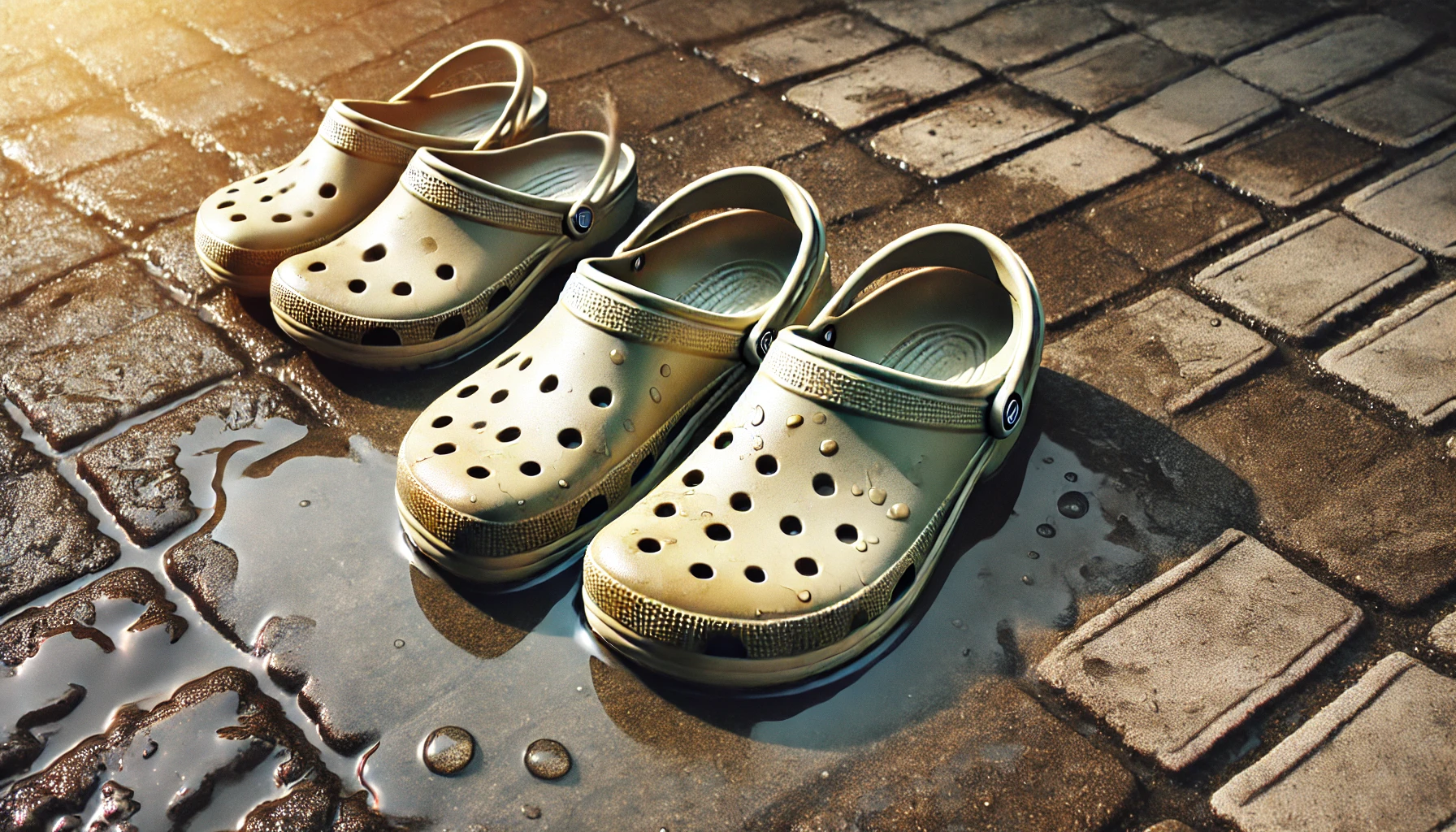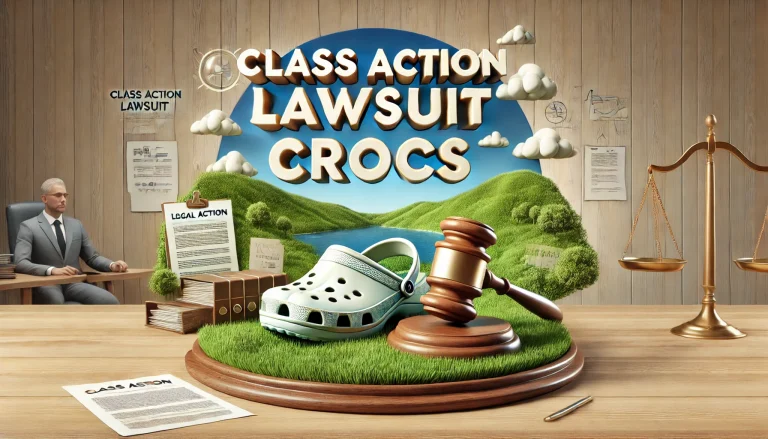Crocs, one of the most recognized names in footwear, is now at the center of the class action lawsuit Crocs faces over allegations about product durability. The case revolves around claims that Crocs shoes shrink when exposed to common outdoor conditions, such as sunlight, heat, and water. This problem has left many consumers frustrated, and the lawsuit alleges that the company misled customers about the durability of its products. Here’s a comprehensive look at the case, its impact, and what it means for both Crocs buyers and the company.
What Is the Class Action Lawsuit Crocs?
The lawsuit alleges that Crocs marketed their shoes as durable and perfect for outdoor activities, but failed to warn customers about the risk of shrinkage. Many consumers have reported that their Crocs became unusable after exposure to heat, sunlight, or water—conditions that are normal for outdoor use.
The lawsuit claims this amounts to:
- False Advertising: Promoting the shoes as suitable for outdoor use while failing to mention their tendency to shrink.
- Breach of Warranty: Selling a product that doesn’t meet reasonable durability expectations.
- Deceptive Practices: Misleading consumers about the shoes’ reliability and intended use.
Background of the Lawsuit
- Filing Information: The lawsuit was filed in California federal court by lead plaintiffs Martha Valentine and Ruby Cornejo.
- Who Is Affected?: The proposed class includes anyone who purchased Crocs shoes since November 2018.
- The Issue: Consumers expected durable shoes but received products that couldn’t withstand regular outdoor conditions. This has led to financial losses, as many had to replace their damaged shoes.
What Happened to the Shoes?
The central issue is that Crocs shrink significantly when exposed to:
- Sunlight: Prolonged exposure causes noticeable deformation and size reduction.
- Heat: Warm temperatures, even in a car or on a hot day, can cause the material to contract.
- Water: Ironically, the very activity the shoes are marketed for—water use—also contributes to their shrinkage.
Consumers reported that their Crocs became so small they could no longer wear them, effectively rendering the product useless. This directly contradicts the company’s marketing, which promotes Crocs as ideal for outdoor and water-based activities.
Key Legal Developments in 2024
The case gained momentum when a California federal court denied Crocs’ motion to dismiss in April 2024. This decision allows the lawsuit to move forward, increasing the likelihood of either a trial or a settlement. The plaintiffs argue that the company had a responsibility to inform customers of the risk, while Crocs maintains that the claims lack merit.
What Are Both Sides Saying?
Plaintiffs’ Arguments:
- Crocs failed to disclose a known issue, misleading customers.
- The shrinkage problem makes the shoes unsuitable for their advertised purpose.
- Consumers deserve refunds or replacements for their financial losses.
Crocs’ Defense:
- Crocs denies the allegations, stating that their products meet industry standards.
- The company argues that shrinkage is not a widespread issue and that it does not justify legal action.
- Crocs emphasizes its commitment to quality and customer satisfaction.
Who Can Join the Class Action Lawsuit?
If you purchased Crocs in November 2018 and experienced shrinkage, you may be eligible to join the lawsuit. To participate:
Eligibility Criteria:
- You must have bought Crocs during or after November 2018.
- The shoes must have experienced noticeable shrinkage or deformation.
How to Join:
- Provide proof of purchase or photos of the damaged product.
- Submit a claim through the legal team or website managing the class action.
Potential Outcomes
The case could end in several ways, with different implications for consumers and Crocs.
If Plaintiffs Win:
- Affected consumers may receive refunds, replacements, or other compensation.
- Crocs might need to update its product materials or marketing practices to prevent similar issues in the future.
- The case could set a precedent, encouraging companies to be more transparent about product performance.
If Crocs Wins:
- The company will avoid financial penalties and can continue its current marketing practices.
- Consumers who experience shrinkage won’t receive compensation.
- Crocs may still face reputational damage from the negative publicity.
Impact on Consumers
For consumers, this case highlights the importance of understanding product warranties and advertising claims. Many people trusted the durability of Crocs based on the company’s marketing, only to find themselves disappointed. A favorable outcome for the plaintiffs could lead to better protections for customers in the future.
What Should You Do If You’re Affected?
If you’ve experienced issues with your Crocs shrinking, here are some steps to take:
Document the Problem: Take photos of the damaged shoes and gather proof of purchase, such as receipts or order confirmations.
Stay Informed: Follow updates on the lawsuit through reliable news sources or legal announcements.
File a Claim: If the lawsuit progresses, instructions will be provided on how to join and seek compensation.
Broader Implications
The lawsuit has implications far beyond Crocs. It serves as a warning to companies about the importance of aligning marketing claims with product performance. For consumers, it emphasizes the need to be vigilant about product reviews and warranties.
For Crocs:
- The company risks losing customer trust and could face significant financial penalties.
- Crocs may need to reevaluate its product materials and marketing strategies.
For the Industry:
- Other companies may take note and ensure their advertising accurately reflects product capabilities.
- Consumer protection laws could see stricter enforcement if this case succeeds.
Conclusion
The class action lawsuit Crocs faces is a pivotal legal case in 2024, shining a spotlight on consumer rights and corporate accountability. For those affected, it represents a crucial opportunity to seek compensation and demand that Crocs take responsibility for allegedly misleading advertising practices.
As this case unfolds, it highlights the broader importance of transparency in business operations and the strength of consumer advocacy in holding companies accountable. Whether or not the plaintiffs prevail, the lawsuit serves as a reminder for businesses to align their marketing with product realities and for customers to remain informed and vigilant.
FAQs on the Class Action Lawsuit Crocs(2024)
What is the lawsuit against Crocs about?
The lawsuit claims that Crocs shoes shrink when exposed to sunlight, heat, or water, making them unwearable. Plaintiffs argue that Crocs misled consumers by marketing the shoes as durable for outdoor and water activities without warning about this issue.
Who can join the lawsuit?
Anyone who purchased Crocs footwear from November 2018 onward and experienced shrinkage or deformation can join the lawsuit. Eligible participants will need proof of purchase or evidence of the damaged shoes to file a claim.
What compensation might consumers receive?
If the lawsuit is successful, affected customers could receive financial compensation such as refunds, replacements, or other settlements. The exact details will depend on the court’s decision or settlement terms.
What is Crocs’ response to these allegations?
Crocs denies the allegations, stating that their products meet advertised durability standards. The company argues that the shrinkage problem is not widespread and does not justify the legal claims.
How can I stay updated on the case?
To stay informed, follow reputable news sources, legal updates, or consumer advocacy websites. If you believe you’re eligible to join the class action, monitor announcements from the legal teams involved in the case for details on filing a claim.




